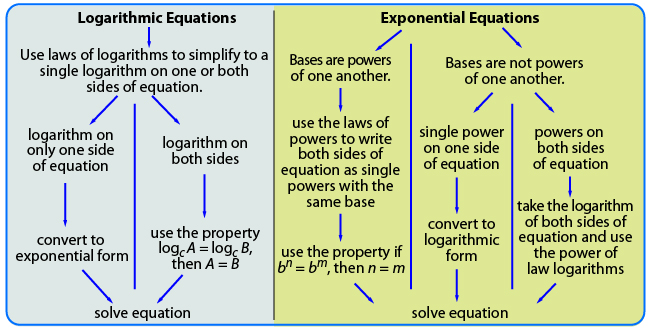Lesson 6 Summary
In this lesson you explored how to solve logarithmic and exponential equations.
To solve a logarithmic equation, apply the laws of logarithms to express the left side and the right side of the equation as a single logarithm. You can then use the property if logc A = logc B, then A = B, where c, A, B > 0 and c ≠ 1.
To solve an exponential equation where the bases are not powers of one another, you can use the property if A = B, then logc A = logc B, where c, A, B > 0 and c ≠ 1.

Check that solutions satisfy the original equation. Remember that the logarithm of a number ≤ 0 is undefined.
There are real-world situations that can be modelled with an exponential or logarithmic equation. Some applications involve finances, such as investments and loans. Other applications can be found in science, such as radioactive decay. Many exponential equations can be expressed in the form ![]()